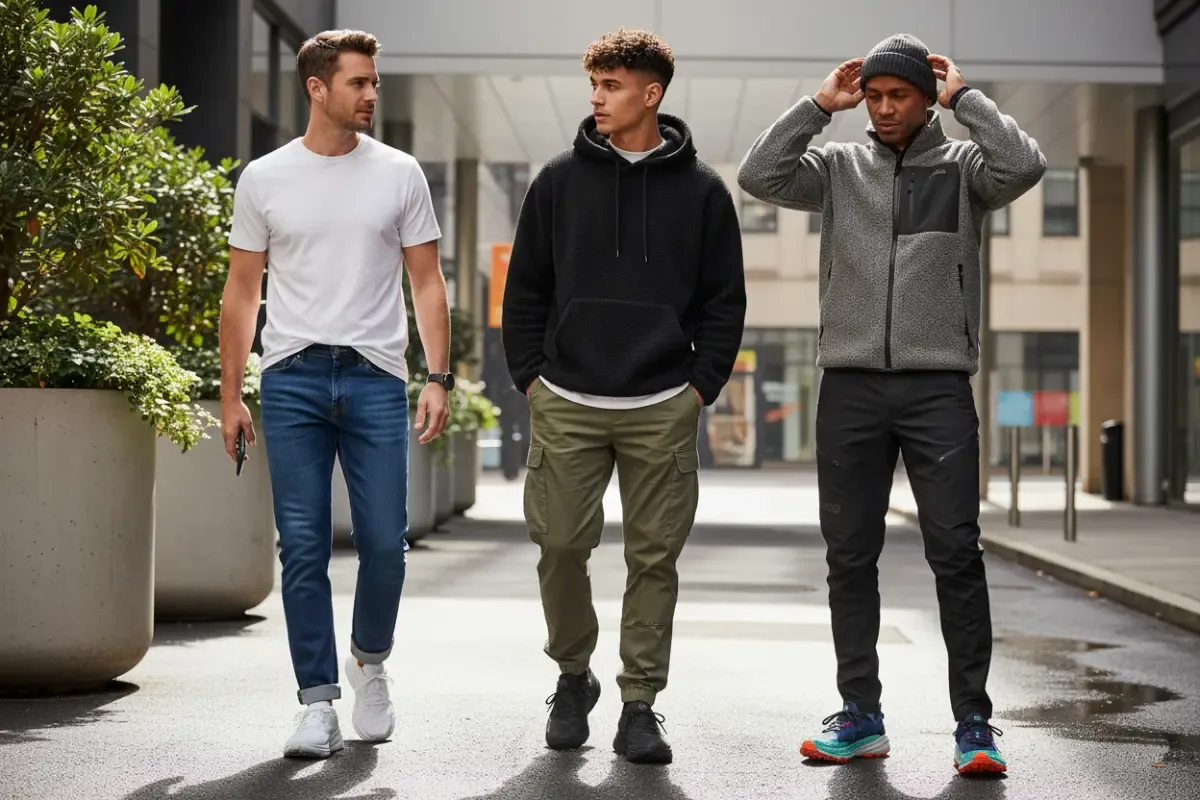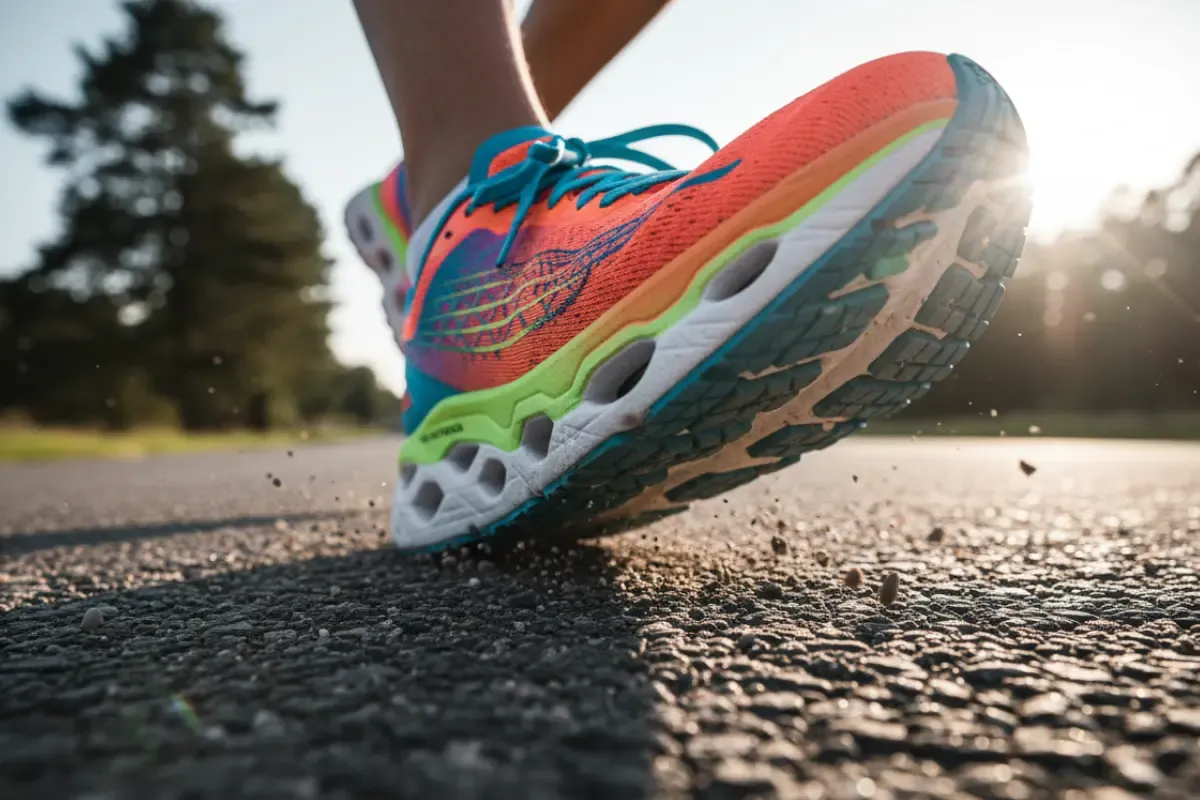
Table of Contents
You’ve definitely heard the name. You’ve probably spent a minute wondering how to say it (it’s “sock-uh-knee,” by the way). Saucony has been a cornerstone of the running world for, well, longer than just about anyone.
Founded way back in 1898 on the banks of Saucony Creek in Pennsylvania, this brand has running in its blood. But they truly exploded onto the scene in 1977. That’s when Runner’s World magazine flagged two of their shoes as top-10, and product demand skyrocketed by an incredible 2,000%. Since then, Saucony has been a trusted name for everyone, from neighborhood joggers to elite marathoners.
They just seem to get runners. But with a huge lineup of shoes full of tech acronyms, finding the right one can feel overwhelming.
Don't worry. This guide will break down everything you need to know. We'll translate the tech, review the key models, and give you a clear plan to find the perfect Saucony for your feet and your goals.
Saucony’s Philosophy & Legacy
What makes a brand last for over a century? It's not just good marketing.
Saucony's origin story is right in its logo. That little "swoosh" is a river, and the three dots are the boulders in that very Saucony Creek where the company was founded. But those three dots also represent the brand's core principles: good performance, good health, and good community.
This philosophy has guided their innovation for decades. They hit a home run in 1981 with the Saucony Jazz, a shoe designed with podiatrists that became a template for distance-running comfort. In the 90s, they introduced their famous GRID cushioning system.
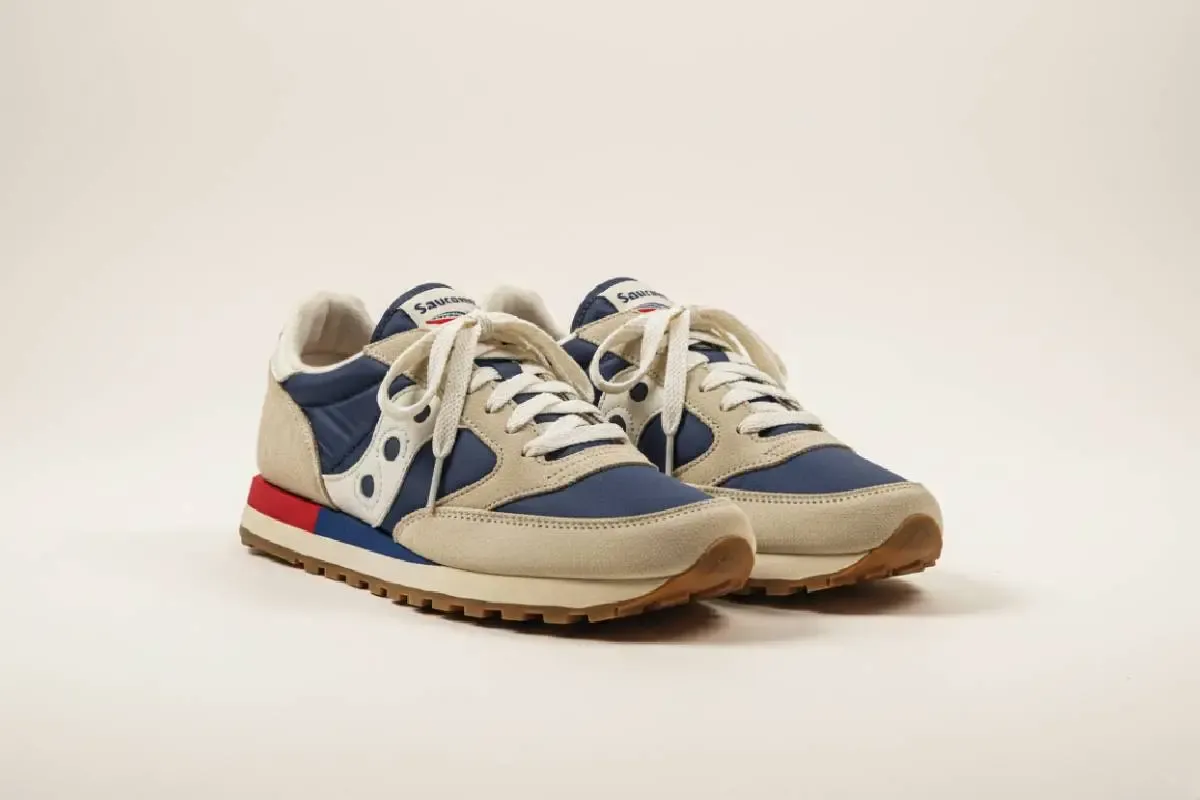
Today, as part of the Wolverine World Wide family, that spirit of innovation is stronger than ever. But it's not just about speed. Saucony is also serious about sustainability. They have ambitious goals: 90% of their products will contain organic, recycled, or renewable materials by 2025, and they're aiming for 100% by 2030. They even created the "Run For Good (RFG) Standard" to prove it, showing that high performance and environmental responsibility can, and should, run side-by-side.
Core Technologies Explained
Okay, let's get into the good stuff. Saucony loves its acronyms, but they all stand for real, tangible features that change how a shoe feels. Let's translate the tech-speak.
For more details: Saucony Running Shoe Technologies Explained: PWRRUN, Speedroll, FORMFIT
So, What's the Deal with All the 'PWRRUN' Foams?
The foam in the midsole is the "engine" of the shoe. It dictates the cushioning, bounce, and weight. Saucony has a whole family of foams, each with a different job.
- PWRRUN: This is the dependable workhorse. It’s an EVA-foam blend that provides a great balance of cushioning and support. It’s not flashy, but it's protective and durable. You'll find it in reliable daily trainers like the Guide 18 and the lightweight Kinvara 15.
- PWRRUN+: This is a big step up in comfort. It’s a TPU-based (Polyurethane) foam, which makes it significantly softer, bouncier, and more durable than standard PWRRUN. This is the stuff you want for high-mileage comfort, and it's the heart of the popular Ride series.
- PWRRUN PB: This is where things get fast. This is Saucony’s premium, PEBA-based "superfoam". It’s incredibly lightweight and boasts an exceptional 88% energy return. This foam feels like it's actively pushing you forward. It's the magic in the Endorphin Speed and the ultra-plush Triumph 22.
- PWRRUN HG: This stands for "Highest Grade." Reserved for their absolute top-tier racing shoes, this supercritical Pebax blend offers a staggering 95% energy return. It's all about maximum propulsion without feeling mushy, and it's what you'll find in the Endorphin Elite.
Keeping You Stable: Center Path vs. Old-School Posts
For runners who overpronate (whose feet roll excessively inward), stability shoes used to mean hard plastic blocks, called medial posts, shoved under the arch. It wasn't always comfortable.
Saucony's modern approach is Center Path Technology. Honestly, it's a game-changer. Instead of forcing your foot straight, it guides it. It uses a wider platform, higher midsole sidewalls that cradle your foot, and an asymmetric shape to gently promote a straighter stride. It’s featured in the new Guide series and feels incredibly smooth and non-intrusive.
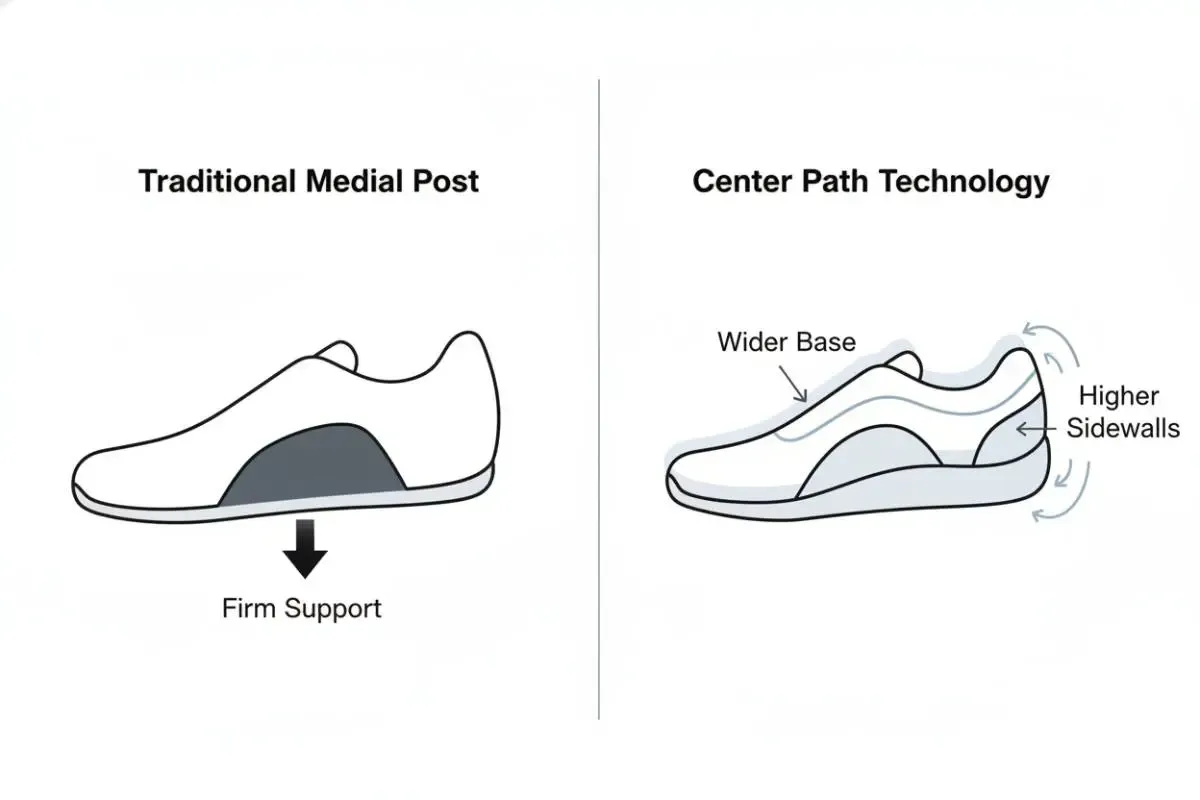
That 'Custom Fit' Feel
Ever put on a shoe that feels like it was made just for you? That's the goal of FORMFIT. It's not just an insole; it's a 3D system. It combines an underfoot cradle, cushioning that shapes to your foot, and an upper that flexes and protects. It’s designed to make the shoe feel like an extension of your body.
Where the Rubber Meets the Road
A great engine needs good tires. Saucony uses two main outsoles:
- XT-900: This is their premium carbon rubber for road shoes. It's strategically placed in high-impact zones (like the heel and forefoot) to give you durability for the long haul. Many runners report getting 400+ miles on trainers using it.
- PWRTRAC: This is for the trail lovers. It’s a tacky, durable rubber that has a Coefficient of Friction (COF) three times higher than normal carbon rubber. In simple terms: it grips everything—rocks, roots, mud, you name it.
The Need for Speed: Plates and Rockers
The "super shoe" revolution is built on two things: superfoams (like PWRRUN PB) and...
- SPEEDROLL Technology: This is that curved, rocker-like shape of the sole. It's designed to roll you forward smoothly and efficiently, making your stride feel effortless and reducing fatigue.
- Plates: Sandwiched inside the foam, a stiff plate (either nylon or carbon fiber) works with the SPEEDROLL rocker to give you that snappy, propulsive toe-off. It's what makes the Endorphin line feel so fast.
Category Breakdown: Find Your Type
Okay, the tech lesson is over. Now let's find your shoe. Saucony's lineup is broad, but it's easy to narrow down once you know your needs.
For the Neutral Runner (Just Give Me Cushion!)
You have a neutral stride and don't need extra support. You just want a smooth ride.
- Saucony Triumph (e.g., Triumph 23): This is the luxury sedan. It’s Saucony's max-cushion offering, packed with bouncy PWRRUN PB foam. It's the perfect shoe for recovery days, long runs, or any time you want to give your legs a treat.
- Saucony Ride (e.g., Ride 18): This is the daily workhorse. The Ride is the definition of a versatile, reliable trainer. It uses the balanced and durable PWRRUN+ foam. If you just want one shoe that can handle 80% of your miles, this is a fantastic choice.
- Saucony Kinvara (e.g., Kinvara 15): This is the lightweight, flexible option. The Kinvara 15 has a low 4mm drop and a firmer (but still protective) PWRRUN midsole. It's for runners who want to feel the ground, work on their form, or have a dedicated shoe for speedwork and tempo runs.
For the Stability Runner (I Need Some Support)
Your foot tends to roll inward (overpronate), and you need a shoe to help guide you.
- Saucony Guide (e.g., Guide 18): This is the new standard. It's the stability version of the Ride, but it uses the modern, non-intrusive Center Path Technology. It’s the perfect daily trainer for mild-to-moderate support.
- Saucony Tempus (e.g., Tempus 2): Who said stability shoes can't be fast? The Tempus is a brilliant hybrid. It has a stable PWRRUN frame to guide your foot, but the core is filled with that fast, bouncy PWRRUN PB superfoam. It's the shoe for stability runners who still want to chase fast times.
- Saucony Omni (e.g., Omni 22): This is the traditional support option. If you need more pronounced support for moderate-to-severe overpronation and like the feeling of a firm medial post, the Omni is your reliable, high-mileage guardian.
For the Speed Demon (Race Day Ready)
You want to go fast. Period.
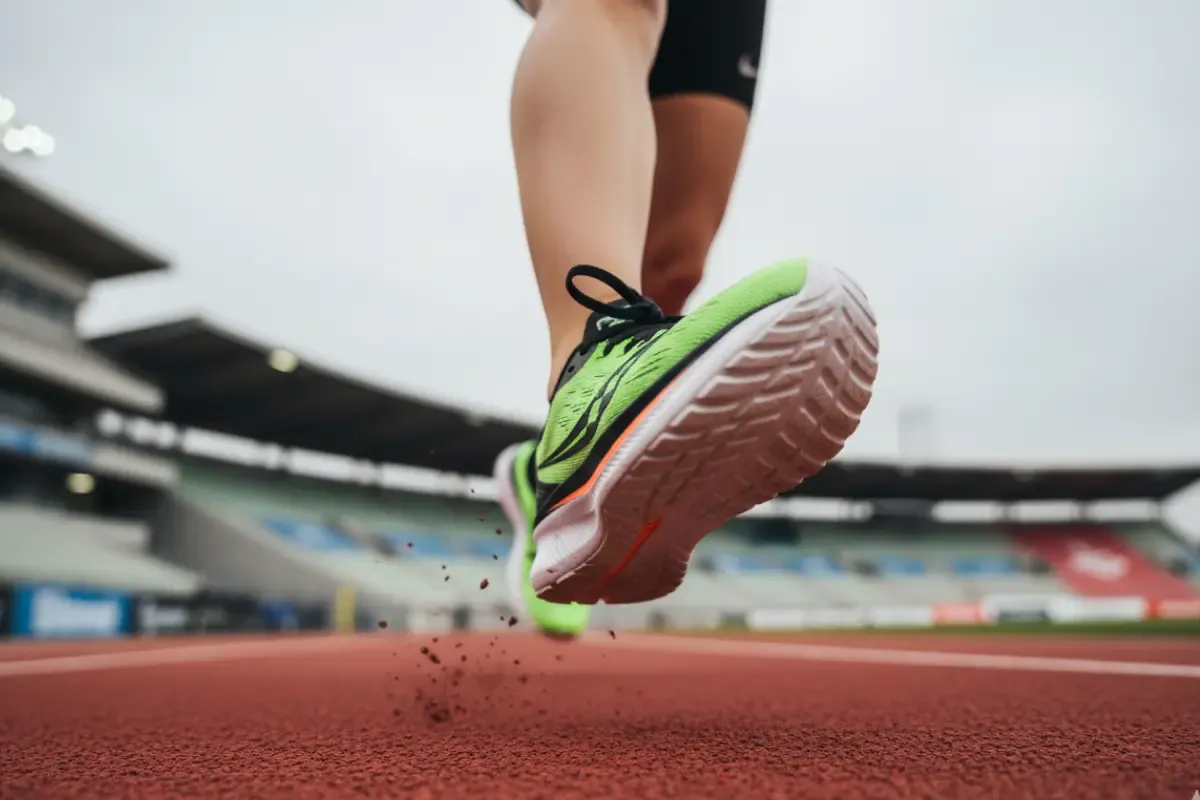
- Saucony Endorphin Speed 4: Widely called the best "do-it-all" speed shoe on the market. It pairs the PWRRUN PB superfoam with a more flexible nylon plate. This makes it fast and propulsive enough for race day, but forgiving enough for daily training and tempo runs.
- Saucony Endorphin Pro 4: This is the marathon racer. It has a full-length S-shaped carbon-fiber plate sandwiched between layers of PWRRUN HG and PWRRUN PB foam. It's tuned for maximum efficiency and cushioning over long distances.
- Saucony Endorphin Elite 2: This is the pure-speed super shoe. Built for 5Ks, 10Ks, and half-marathons, this shoe features the most aggressive SPEEDROLL rocker, a slotted carbon plate for a snappy feel, and the new incrediRUN foam. It’s a rocket ship.
For the Trail Adventurer (Get Off the Road)
You prefer dirt, rocks, and roots over pavement.
- Saucony Peregrine 15: The versatile all-rounder. Think of it as the Kinvara of the trails. It's nimble, lets you feel the terrain, and has deep, aggressive 5.6mm lugs made of sticky PWRTRAC rubber. It’s perfect for technical singletrack.
- Saucony Xodus Ultra 4: The ultramarathon workhorse. This shoe is built for long-distance comfort and protection. It has a roomier toe box, a protective rock plate, and a midsole that blends PWRRUN PB and a stable PWRRUN frame. The latest version also features a Vibram Megagrip outsole for unbeatable grip.
For the New Runner (Where Do I Start?)
Just getting into running? You don't need a $275 carbon-plated shoe.
- Saucony Axon 2: This is an amazing entry point. It gives you a thick, protective stack of PWRRUN foam and a rocker geometry (like SPEEDROLL) to help you roll through your stride, all at a very accessible price.
- Pro Tip: An older model of the Saucony Ride is also one of the best "first shoes" a runner can buy. It's balanced, durable, and does everything well.
Reviews & Real-World Performance
Specs are one thing. But what do thousands of runners really think? After aggregating reviews from running forums and expert testers, a clear picture emerges.
The Good Stuff (General Consensus):
- Fit: Thank goodness, Saucony is known for fitting true to size. This takes a lot of guesswork out of buying online. They've also been praised for offering more wide and extra-wide options in their most popular models like the Ride and Guide.
- Durability: Their daily trainers are built to last. You can reliably expect about 400 miles from a Ride, Guide, or Triumph. The racing shoes (Endorphin line) are a different story; they are built for speed, not longevity, so you should expect closer to 200-300 miles.
- The Fan Favorite: The Endorphin Speed is almost universally loved. Runners on forums like r/RunningShoeGeeks constantly call it the "do-it-all" shoe, perfect for intervals, long runs, and even races.
The "Good to Know" (The Critiques):
- Kinvara 15: While loved for its return to a lightweight, fast feel, the minimal outsole with lots of exposed foam does raise durability concerns for runners who scuff their feet or run on rough pavement.
- Endorphin Elite 2: It's incredibly fast, but the highly specialized upper can cause pinky toe blisters for some runners, and the super-soft foam can feel a bit "squirrely" (unstable) on sharp corners.
- Wet Grip: While their PWRTRAC trail grip is amazing, the standard XT-900 road outsole isn't always the best in very wet, slick conditions.
How Do They Stack Up?
- vs. Nike: Saucony's PWRRUN PB/HG foams are direct competitors to Nike's famous ZoomX. Many runners find the Saucony foams feel more durable and consistent over their lifespan.
- vs. Hoka: Hoka is known for its plush, "marshmallow" softness. Saucony's Triumph is a direct competitor. But when it comes to stability, Saucony's new Center Path is often seen as a more modern and less-intrusive alternative to Hoka's J-Frame.
- vs. Brooks: This is the classic rivalry. Brooks' DNA LOFT foam is famously soft, and their GuideRails support is very popular. Saucony's foams tend to feel a bit bouncier and more responsive. It often comes down to personal preference: do you want a "soft" ride (Brooks) or a "bouncy" ride (Saucony)?
Buyer’s Guide: How to Choose Your Saucony
Alright, let's find your shoe. Don't just buy based on color. Follow these steps.
First, Know Thyself (Gait & Arch)
The most important question: how does your foot move? This is your "pronation."
- Overpronation: Your foot rolls excessively inward after it lands. You likely have low arches or flat feet.
- Your Shoes: You need a Stability model.
- Go for: Guide, Tempus, or Omni.
- Neutral / Supination: Your foot rolls straight (neutral) or outward (supination). You likely have medium-to-high arches.
- Your Shoes: You need a Neutral model.
- Go for: Triumph, Ride, or Kinvara.
The Quick Home "Wet Test": Not sure? Wet the bottom of your feet and step onto a piece of cardboard or a paper bag.
- Full, flat footprint: You probably have flat feet and overpronate. Start with Stability.
- A thin strip connecting heel and forefoot: You likely have high arches and are a Neutral runner (or supinator).
- Somewhere in between: You have a normal arch and are a Neutral runner.
Trying Them On (In-Store vs. Online)
- In-Store (Highly Recommended): Go to a specialty running store. They can perform a professional gait analysis (often for free) by watching you run on a treadmill. This is the most accurate way to get it right. Pro Tip: Go shoe shopping in the afternoon or evening. Your feet swell during the day, just like they do on a run, so this ensures you don't buy shoes that are too small.
- Online: If you're buying online, stick to what you know or use Saucony's official "Running Shoe Finder Tool". Read lots of reviews. As we mentioned, most runners find Saucony fits true to size, but for high-mileage marathon trainers, going up a half-size is a common and smart strategy.
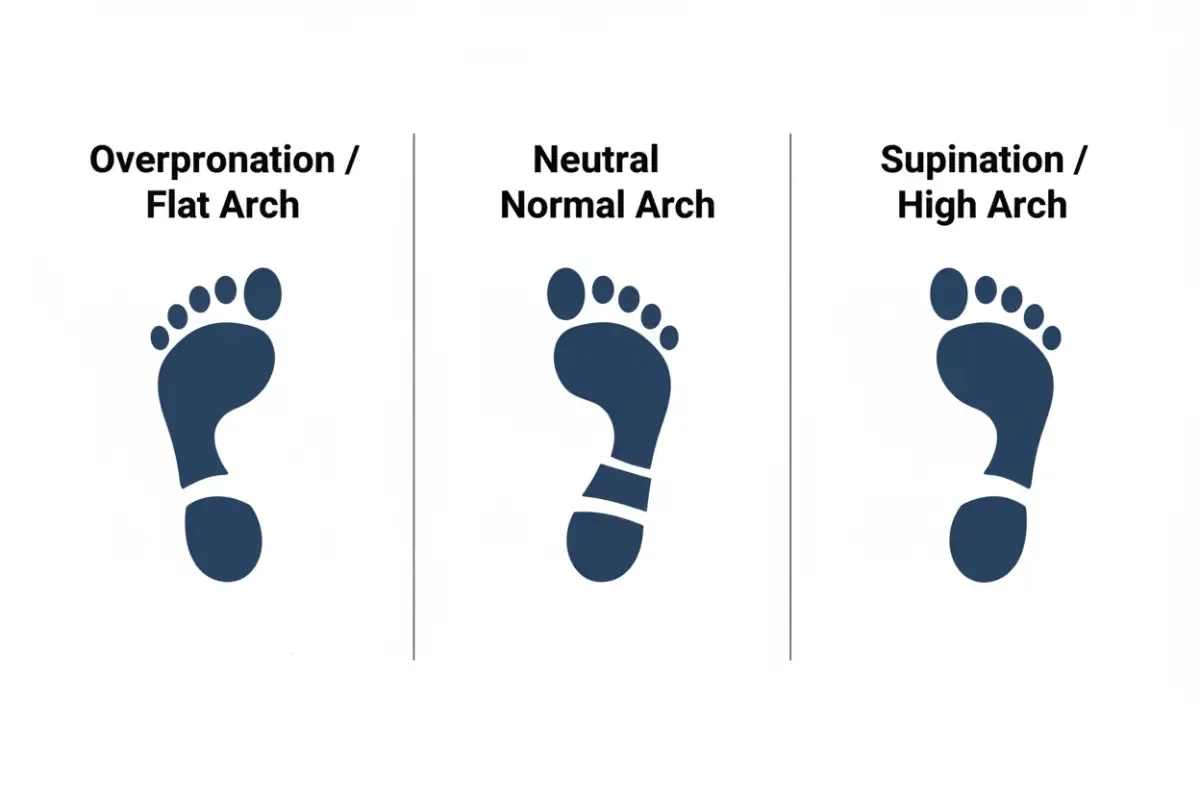
Got Orthotics?
If you wear custom or aftermarket orthotics, you need a shoe with enough volume and a removable insole. The Saucony Echelon series is specifically designed for this, with a wide, generous fit. The Ride and Guide are also known to be very orthotic-friendly.
Care, Maintenance & Longevity Tips
You’ve made the investment, so let's make it last.
- Rule #1: NO Machines. Never, ever put your running shoes in the washing machine or dryer. The high heat and tumbling will destroy the foam's structure and melt the glues.
- How to Clean: Use a soft brush, mild soap, and cold water.
- How to Dry: If they get soaked on a rainy run, pull out the insoles and stuff the shoes with newspaper. Let them air-dry naturally, away from direct heat.
- The 48-Hour Rule: This is the best-kept secret. Rotate your shoes. Don't run in the same pair two days in a row. It takes 24-48 hours for foam to fully decompress and regain its bouncy properties. Running on "tired" foam breaks it down much faster.
- Know When to Say Goodbye: That 400-mile mark is a solid guideline for trainers. For racers, it's less. The biggest sign? You suddenly start feeling new, unexplained aches in your shins, knees, or hips. That's often your body telling you the foam is dead.
Final Thoughts
From its humble 1898 roots on a Pennsylvania creek bank to the carbon-plated podiums of 2025, Saucony has more than earned its spot as a top-tier running brand.
They strike a rare balance between reliable, comfortable workhorses (like the Ride) and boundary-pushing innovations (like the Endorphin Elite). They've thoughtfully evolved their technology, moving from simple posts to smart, holistic systems like Center Path and developing some of the bounciest foams on the market.
Whether you're looking to run your first mile or your fastest marathon, there is almost certainly a Saucony built for you.
